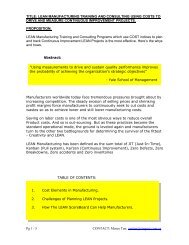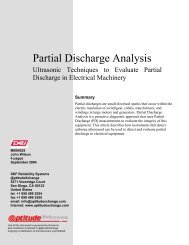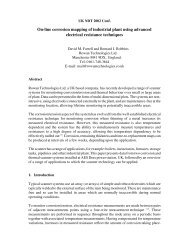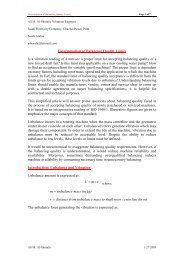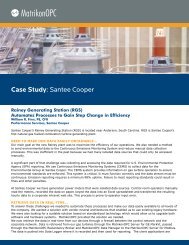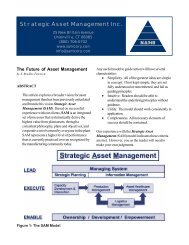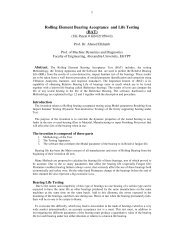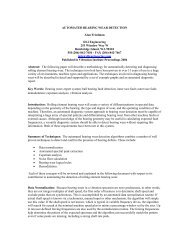A Re-Examination of Failure Analysis and Root Cause Determination
A Re-Examination of Failure Analysis and Root Cause Determination
A Re-Examination of Failure Analysis and Root Cause Determination
- No tags were found...
Create successful ePaper yourself
Turn your PDF publications into a flip-book with our unique Google optimized e-Paper software.
7V. How to conduct a failure analysisA failure analysis is much like the work <strong>of</strong> a detective. Important clues are discoveredthroughout the investigation that provide insight into what may have caused the failure<strong>and</strong> what contributing factors may have been involved. The failure analyst is aided by abroad knowledge <strong>of</strong> materials in general. Success is more likely if the analyst is aware<strong>of</strong> the failed material’s mechanical <strong>and</strong> physical properties <strong>and</strong> its fabrication <strong>and</strong>historical performance characteristics. The analyst must also possess a workingknowledge <strong>of</strong> structural design <strong>and</strong> stress behavior.A component is considered to have failed when it has deteriorated to the point at whichit is unsafe or only marginally capable <strong>of</strong> performing its intended function. For an item tobe classified as a failure it need not be completely broken. As an illustration, consider afracture as a type <strong>of</strong> failure. Fractures occur in materials when cracks are initiated <strong>and</strong>propagate to a greater or lesser degree. They may not go to completion. Cracks maybe initiated by mechanical stresses or environmental- or chemical-influences, by theeffects <strong>of</strong> heat, by impurities in the material or by a combination <strong>of</strong> these <strong>and</strong> manyother factors. Underst<strong>and</strong>ing the relative importance <strong>of</strong> those factors in the specific caseat h<strong>and</strong> is the job <strong>of</strong> the failure analyst.For the purposes <strong>of</strong> this paper, the metallurgical aspects <strong>of</strong> materials will beemphasized in the illustrations. Other types <strong>of</strong> failures will be considered in latersegments <strong>of</strong> the overall publication.1. Preliminaries. Determine when, where <strong>and</strong> how the failure occurred.Before beginning any failure analysis, it is vital to determine whether or not destructivetesting is permitted or if the testing must be limited to non-destructive approaches. If thefailure is or may be subject to litigation, opposing counsels must agree on this pointbefore any sampling begins. Witnessed testing (the presence <strong>of</strong> parties from both sidesin a law suit) may be called for.It is important to visit the failure site in the field if possible. All operators involved in thefailure should be interviewed personally. Determine what the conditions were at thetime <strong>of</strong> failure. Were there prior indications suggesting failure was about to occur? Wasthe failure gradual or catastrophic? Was the part protected after failure? How was thefracture h<strong>and</strong>led? Did the failure involve any fire or other condition which could havealtered the microstructure <strong>of</strong> the base metal or <strong>of</strong> some part <strong>of</strong> the sample such as aweld? These <strong>and</strong> all other appropriate questions should provide a basis for theinvestigation.It may be important to obtain documentation on maintenance procedures during thelifetime <strong>of</strong> the equipment that failed including, if applicable, maintenance personnel,records <strong>of</strong> scheduled maintenance, <strong>and</strong> suppliers <strong>and</strong> products used.



